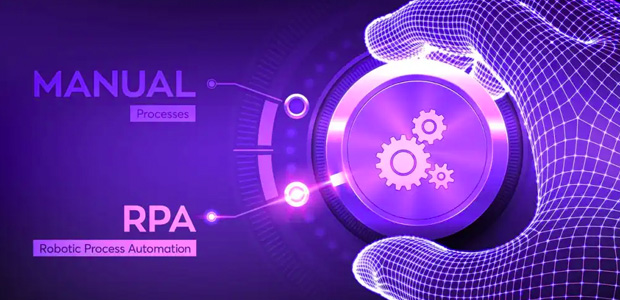For modern healthcare practices, efficient and accurate medical billing operations are essential to financial success. However, manual billing processes can be time-consuming, error-prone, and make it difficult to scale. Automating key steps in the medical billing workflow brings game-changing improvements in productivity, reduction of costly claim errors, accelerated revenue cycles, and optimized billing costs.
This comprehensive guide will examine:
- Benefits of Medical Billing Automation
- Manual Billing Workflows vs. Automated Solutions
- Choosing the Right Automation Approach
- Key Processes to Automate
- Implementing Intelligent Automation
- Automation Use Cases and Examples
- Measuring the Impact and ROI
Read on to learn how healthcare organizations of all sizes can tap into robotic process automation to eliminate inefficiencies and bottlenecks – enabling staff to focus on more value-added patient care and strategic initiatives.
Benefits of Medical Billing Automation
Automating manual, repetitive billing tasks provides the following advantages:
- Increased Productivity – Automation handles high volume routine tasks faster than human staff, allowing them to work on complex billing issues.
- Reduced Errors – Automated processes minimize data entry and other common human errors that lead to costly claim rejections and rework.
- Improved Compliance – Systems ensure billing protocols adhere to changing payer and government regulations through built-in validations.
- Higher Reimbursements – Clean, accurate digital claims sent faster lead to quicker payments at full approved amounts.
- Better Reporting – Automated analytics provide real-time dashboards on metrics for data-driven decisions.
- Scalability – Systems easily scale to handle growing patient volumes without proportionally growing billing staff.
- Cost Savings – Requires fewer billing admin resources over time as automation takes over repetitive tasks.
By transitioning from manual workflows, healthcare organizations can optimize billing operations and free up staff time for revenue cycle initiatives.
Transitioning from Manual to Automated Workflows
Typical manual billing operations rely on tedious processes:
- Re-keying demographic and insurance data from patients into multiple systems.
- Tracking and managing claims through various stages on paper spreadsheets.
- Calling providers and patients for billing information needed to process claims.
- Reviewing EOBs manually to determine payment posting details.
- Generating billing reports through manual tabulation and consolidation.
Not only are such processes slow and costly due to administrative workload, but they are also prone to errors that can lead to claim denials and delayed or missed payments.
In contrast, automated billing solutions use technology to streamline these workflows:
- Automated data capture and coding algorithms minimize manual data entry.
- Bi-directional integration eliminates re-keying data between systems.
- Claims workflow is tracked digitally from submission to payment.
- Rules engine auto-routes claim follow ups and discrepancies.
- EOB details digitally integrated into patient accounts for automated payment posting.
- System dashboards generate real-time analytics vs manual reporting.
Optimized workflows promote faster billing with fewer errors to drive revenues.
Factors for Choosing Automation Approach
Key considerations when assessing automation technology include: The right automation blend optimizes existing workflows rather than disrupting them through rapid overhauls.
Key Medical Billing Processes to Automate
Medical billing spans front-end patient engagement to back-end claims management.
Prime processes to automate include:
Patient Access
Claims Management
Payment Posting
Analytics
Implementing Intelligent Automation
Leading billing automation platforms incorporate intelligent technologies like:
- AI-enabled optical character recognition to extract unstructured data from claims, bills etc. and auto-populate forms or databases.
- Natural language processing to interpret free text clinical notes and documentation to suggest codes.
- Predictive analytics to forecast cash flow, model revenue cycles and detect potential claim issues before submission.
- Robotic process automation to perform repetitive admin tasks like payment data entry faster with no errors.
- Rules engine and workflow automation to digitize manual processes around eligibility checks, coding, claims submission, denials management etc.
Intelligent automation adapts and improves workflows continually over time versus static traditional automation.
Medical Billing Automation Use Cases
Here are examples of positive outcomes from real-world implementations of billing automation:
- A 500-bed hospital shortened claim turnaround time from 14 days to 2 days by automating charge capture, coding, and claims generation.
- An oncology practice reduced denial rate from 8% to 3% by implementing automated pre-submission claim audits.
- A cardiology clinic increased point-of-service patient payments by 45% after adding tablet-based self-service check-in and payments.
- A pediatric group practice saved 10 hours/week of billing staff time through automated enrollment eligibility verifications.
- An urgent care chain shortened payment cycle by 8 days by automating payment posting from digitized EOBs.
- A primary care clinic reduced bad debt write-offs by 57% using automated patient payment plans for overdue balances.
No matter the practice size or specialty, intelligently automating even targeted pain points in the billing process improves outcomes.
Measuring the Impact of Billing Automation
To assess the return on automation investments, key metrics to monitor include:
- Claim rejection and denial rates – Lower percentages indicate higher accuracy.
- Revenue cycle time – Faster turnaround from claim submission to payment.
- Days in accounts receivable – Reduced days reflect improved collections.
- Coding accuracy – Increase reflects fewer errors and compliance.
- Staff productivity – Higher patient volumes handled per biller.
- First pass acceptance rates – Increased rates mean fewer rejected claims.
- Cost per claim – Lower cost through automation efficiencies.
- Point-of-service collections – More patients paying portions owed upfront.
Both clinical and financial metrics offer insights into the impact of optimized workflows.
Summary
Manual medical billing processes are no longer sustainable in the modern healthcare era. Intelligent automation provides the tools and technologies to remove inefficiencies, errors, and costs from billing workflows. Streamlined operations ensure cleaner claims, faster payments, reduced denials and improved staff productivity. As workflows continue to evolve, building competencies in billing automation, analytics and staff training enables long-term scalability and performance. By letting technology handle repetitive tasks, healthcare organizations can devote more resources directly to advancing patient care.
